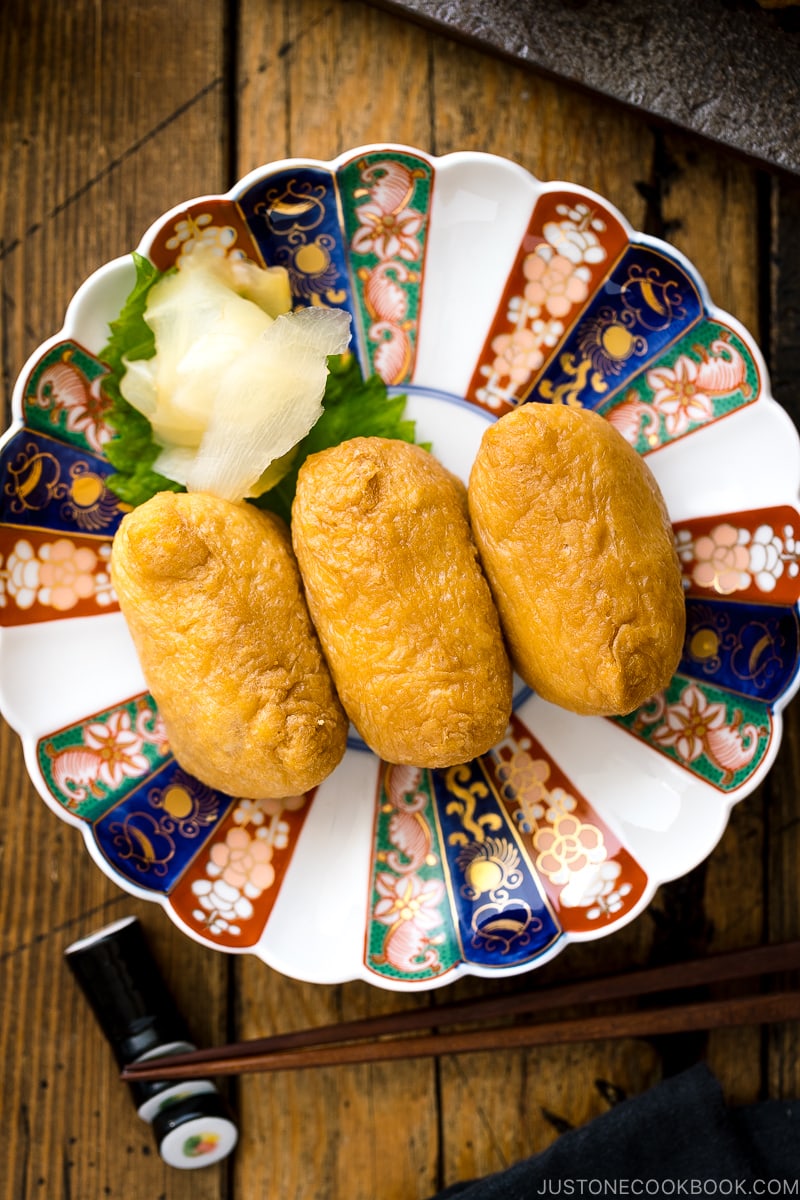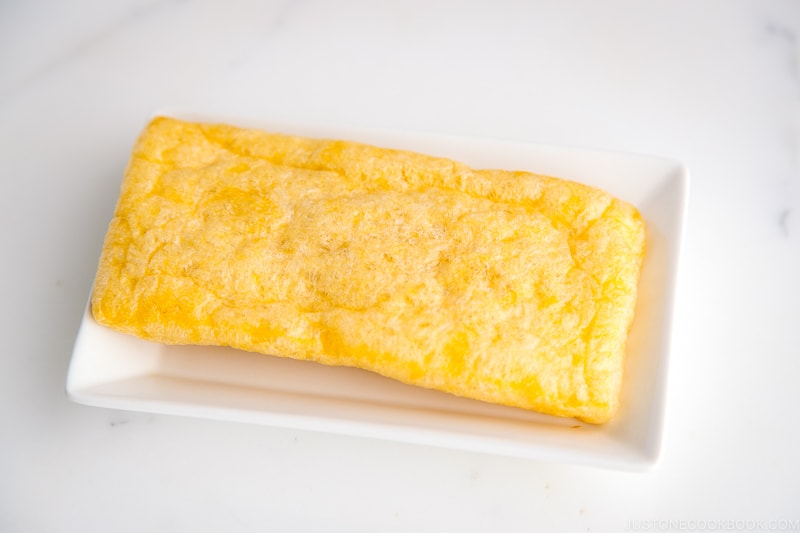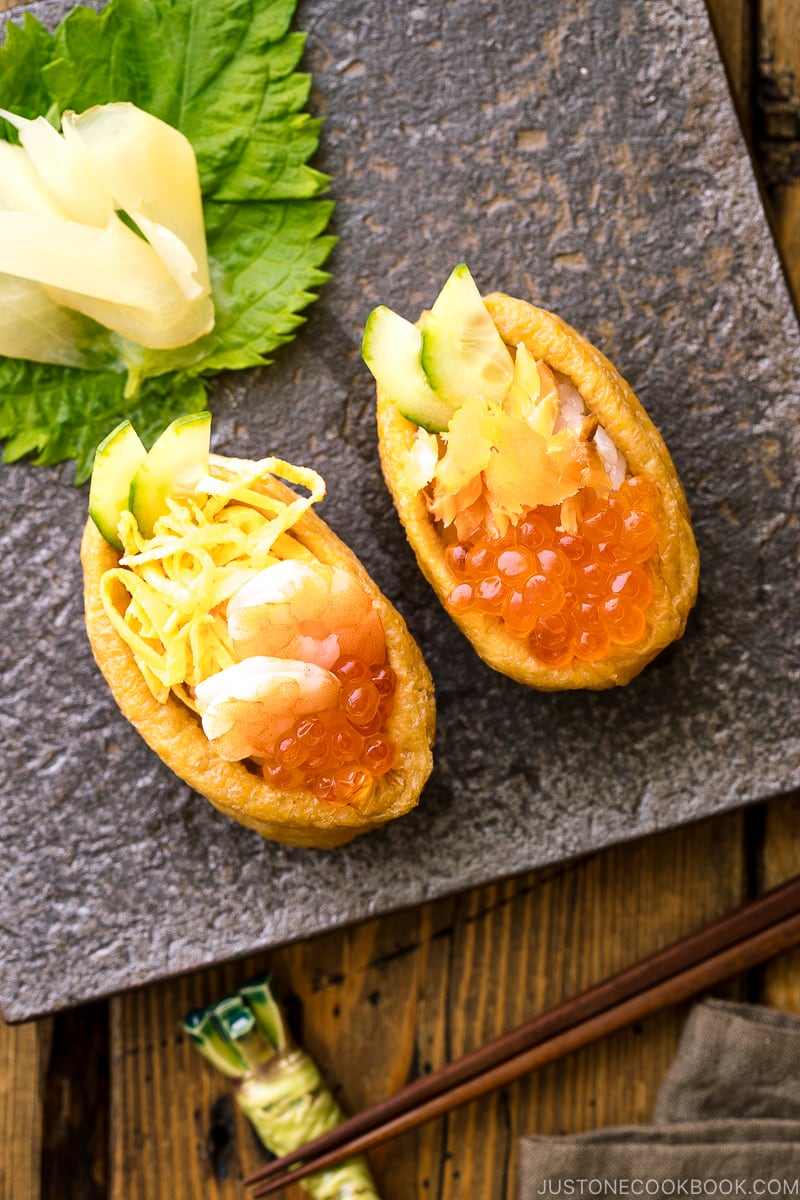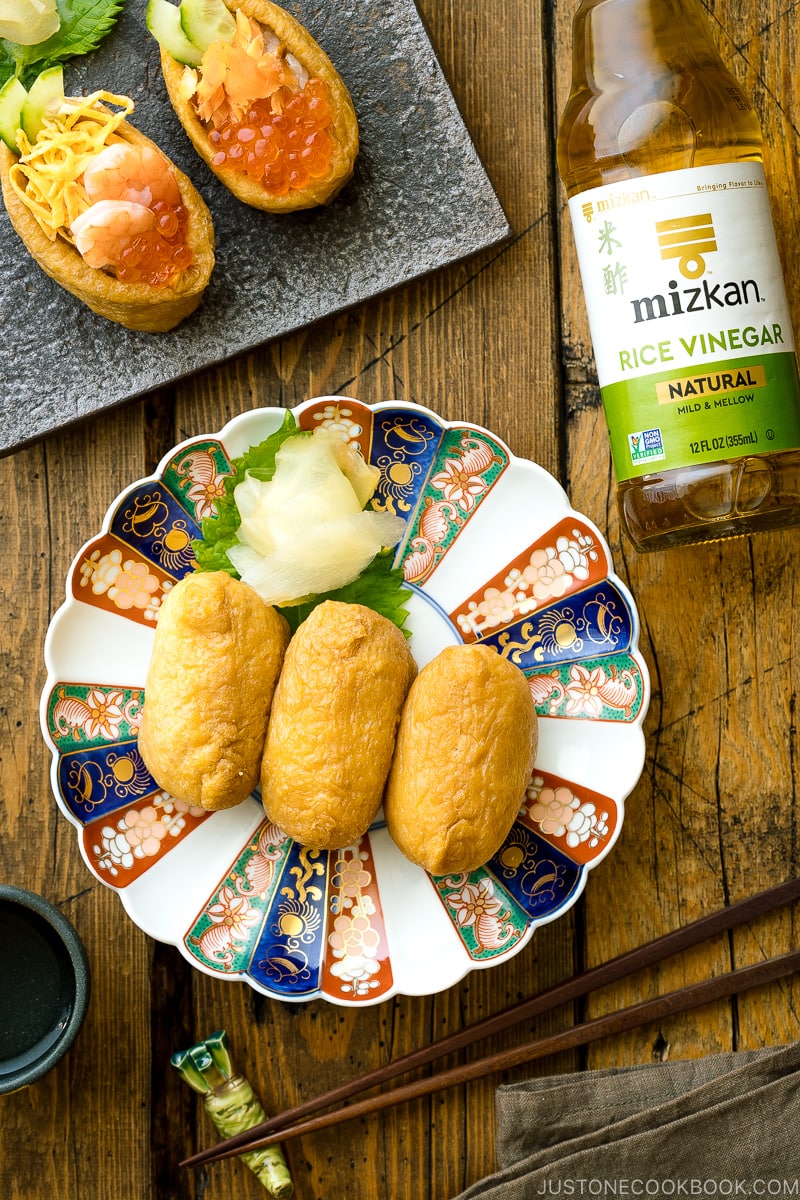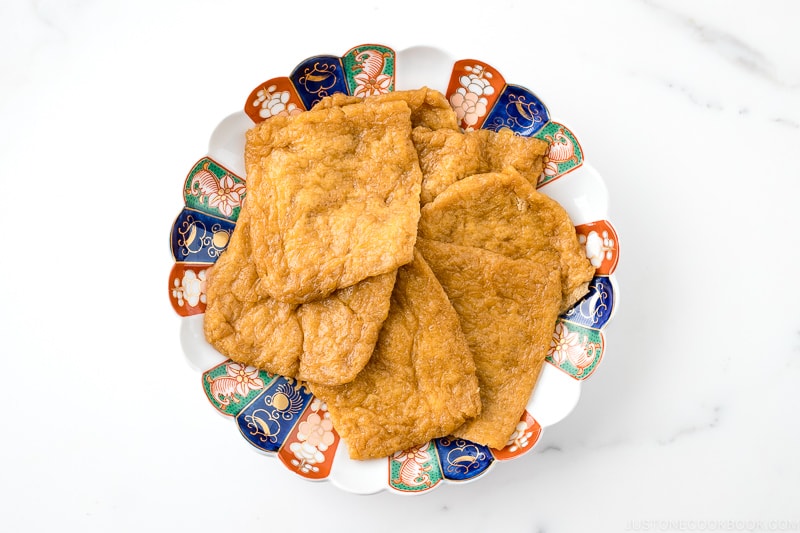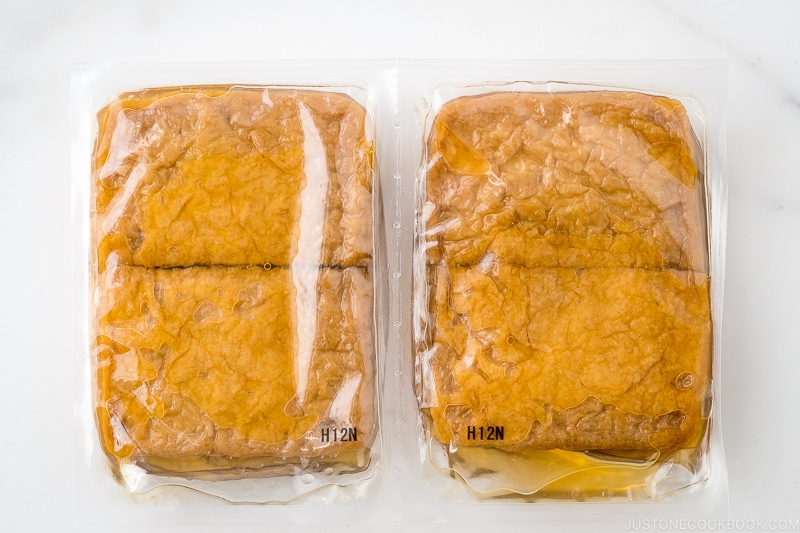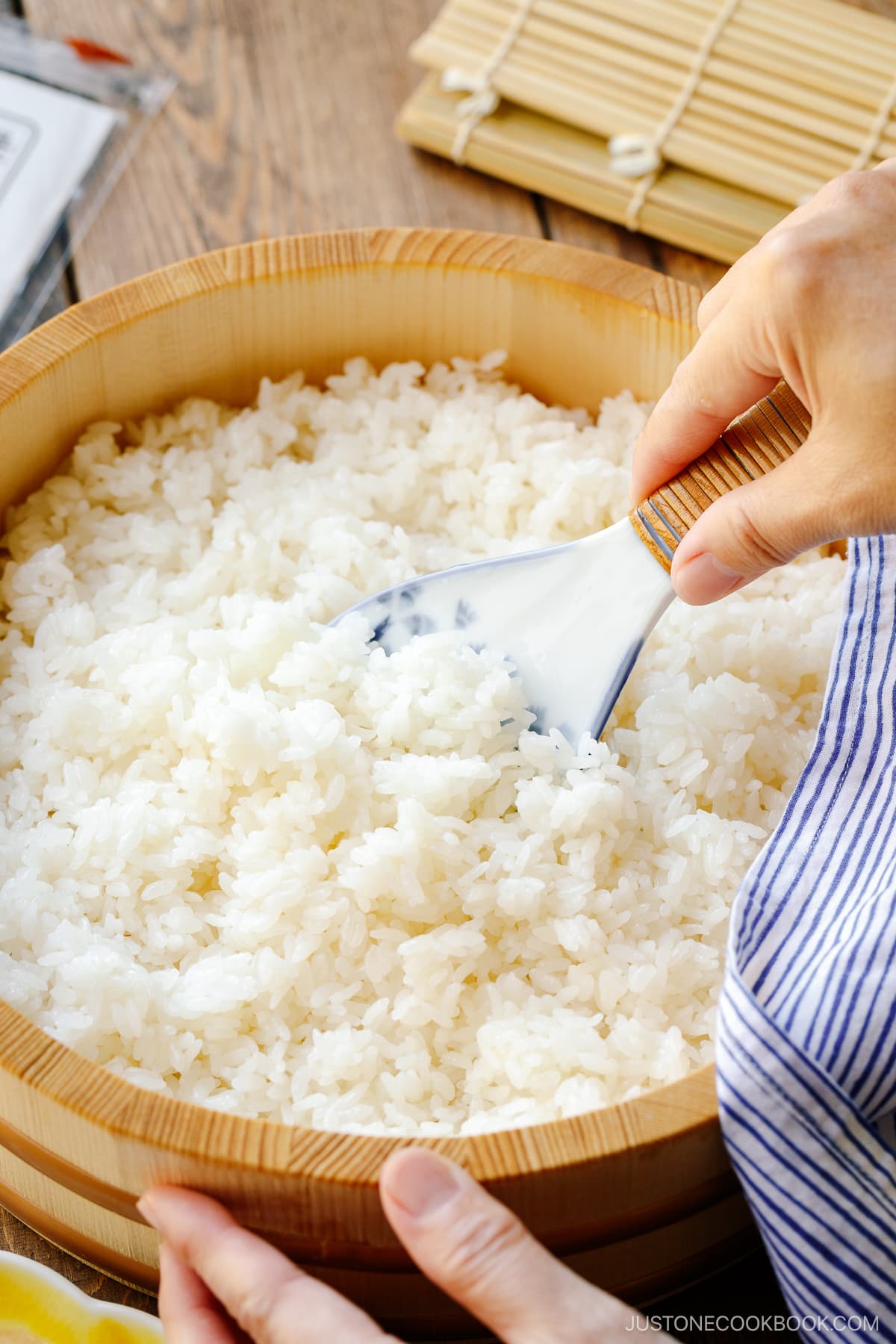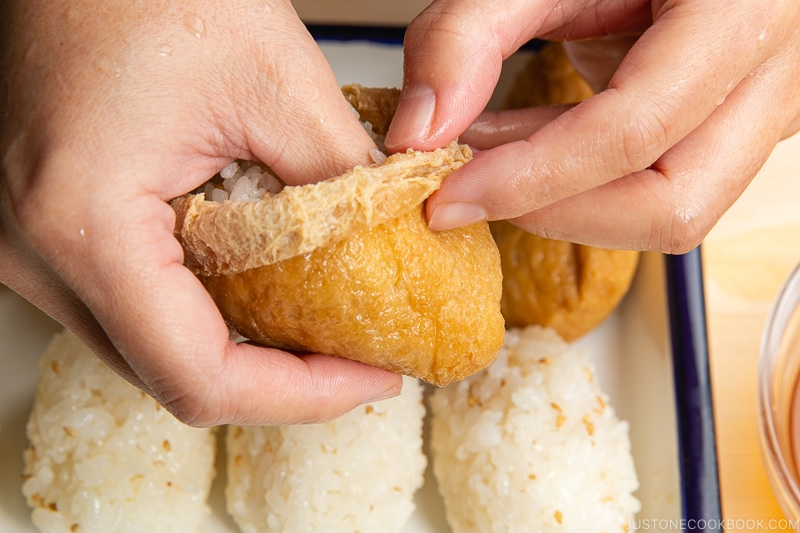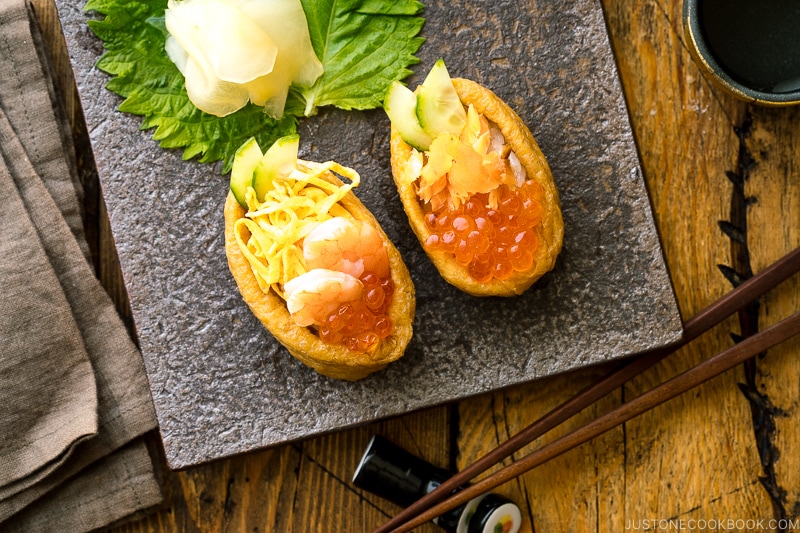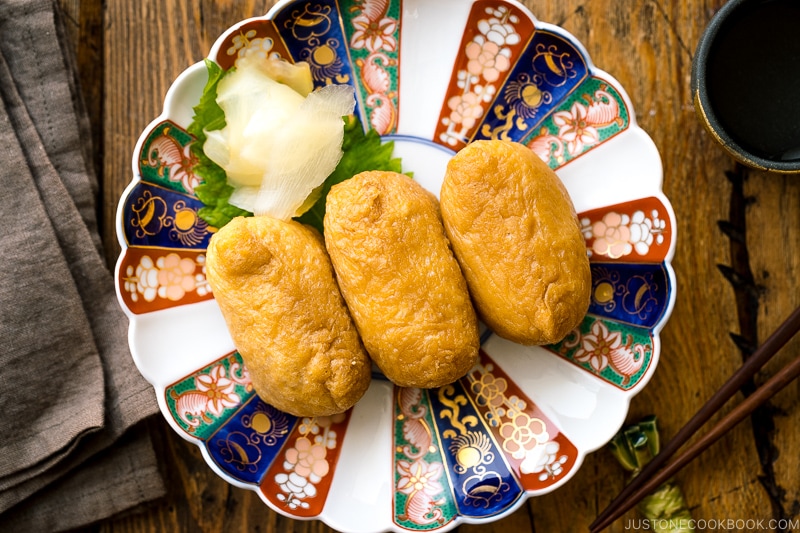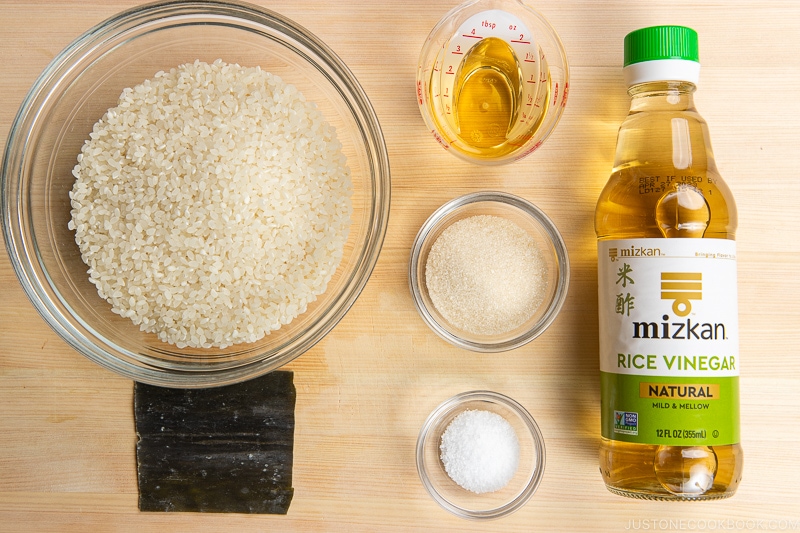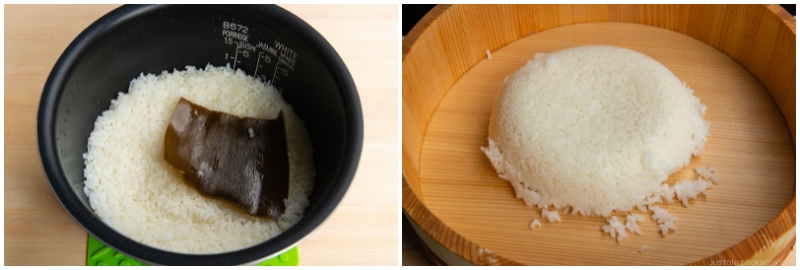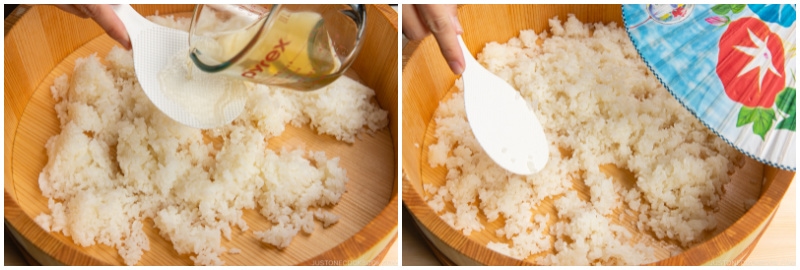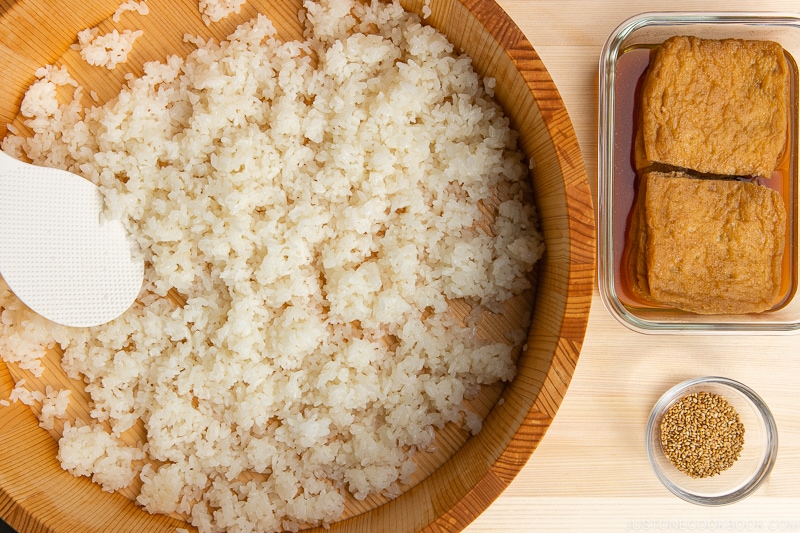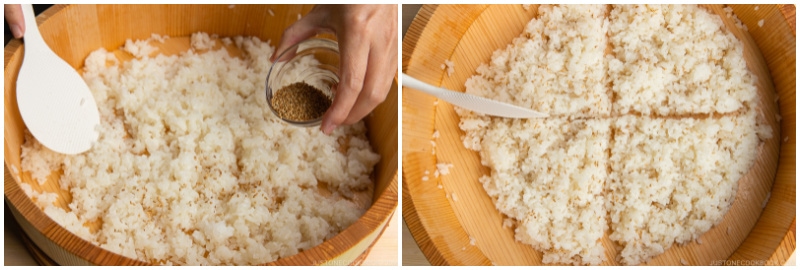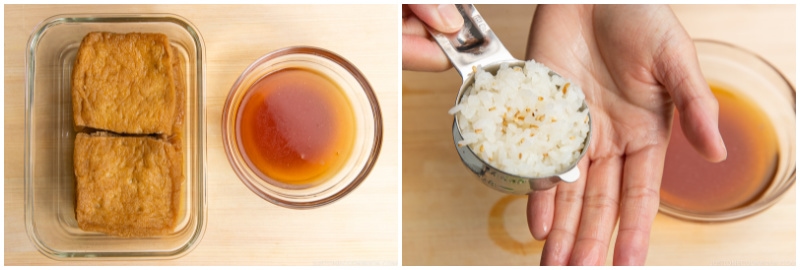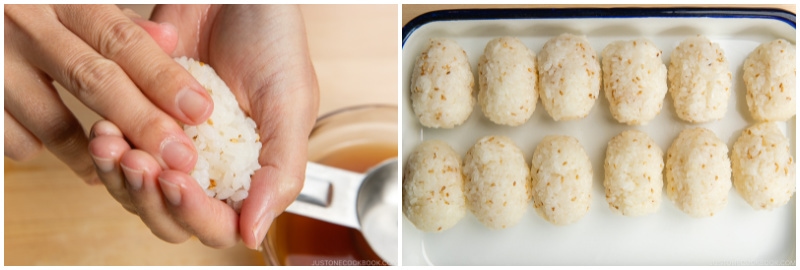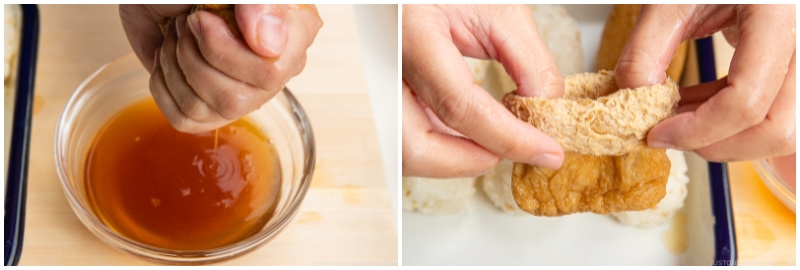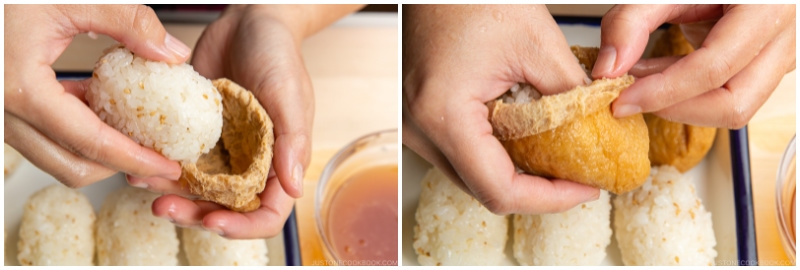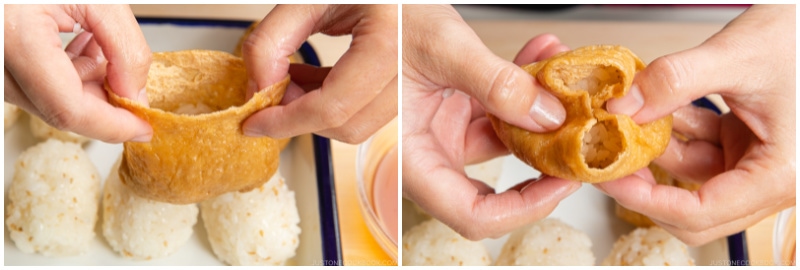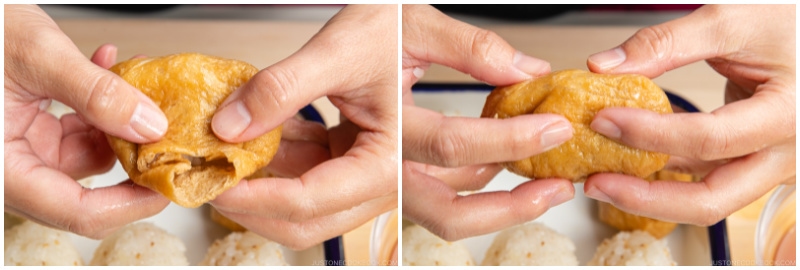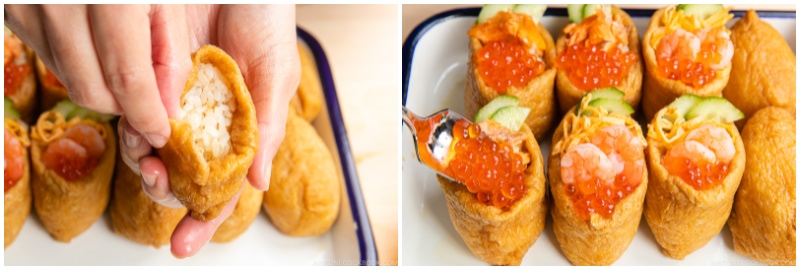Looking for an easy sushi recipe to make at home? You won’t go wrong with Inari sushi (稲荷寿司). You can enjoy tasty, filling, and addicting Inari sushi at any time of the day. They make a satisfying little snack and the perfect finger food to serve at your next home gathering. In this recipe, I’ll show you how to make proper sushi rice and two variations of Inari sushi.
What Is Inari Sushi?
Inari sushi (稲荷寿司, いなり寿司), or Inarizushi as we call it in Japan, are made of sushi rice that we stuff inside seasoned deep-fried tofu pockets/pouches called Inari age. The tofu pockets are cooked in a dashi-based broth. After the tofu pockets absorb all the flavors, we squeeze them to remove the liquid and get them ready to stuff with sushi rice. With their sweet and savory taste and toothsome bite, these little golden pockets are the best sushi to enjoy at home, picnic, or on the go. Inari sushi are also a popular item for bento boxes, and you may see this type of sushi packed at the deli along with sushi rolls.
The Origin of Inari Sushi
Behind its popularity, Inari sushi has a fascinating story. It gets its name “Inari” directly from the deity who protects the crops. At Inari shrines in Japan, people bring the deep-fried tofu pockets–what we call aburaage (油揚げ)–as offerings and place them in front of the fox statues on the shrine grounds. It is said that foxes are the messengers of the Inari god and it’s believed that they like aburaage. Eventually, newly harvested rice was added as a filling to the fried tofu pockets to show gratitude for good crops towards the Inari god. Hence, the dish was named Inarizushi or Oinari-san (O is an honorific prefix, and -san is an honorific title) and the Japanese have enjoyed it for over 170 years.
Tokyo vs. Osaka Style Inari Sushi
In Japan, Inari sushi in the Tokyo area and the ones in the Osaka area are actually different in shape. In the Tokyo area, Inari sushi is shaped like a straw bag and the sushi rice is completely wrapped inside. Whereas in the Osaka area, you will find fox-ear-like triangle-shaped Inari sushi that exposes the sushi rice at the bottom. Other versions include straw bag-shaped Inari sushi that is decorated with colorful ingredients on the top opening. Sometimes sushi rice inside the tofu pocket is mixed with various ingredients to give additional flavors and texture.
Tokyo-Style Inari Sushi
Straw bag-shaped Sushi rice is completely covered in Inari age
Osaka-Style Inari Sushi
Triangle-shaped (sushi rice is exposed on the bottom) Straw bag-shaped (opening on the top, decorated with colorful ingredients) Sushi rice is mixed with ingredients like Osaka-style chirashi sushi
How to Make Inari Sushi
Inari sushi is made in three simple and easy steps. It all comes together very quickly once you make the sushi rice. *If you have an extra hour, I recommend making homemade Inari age. You can even make it in advance and freeze it!
Homemade vs. Store-Bought Inari Age
Homemade Inari age are the best, in my opinion, especially because store-bought ones tend to be a lot sweeter. However, there are benefits for store-bought Inari age. Let’s compare the two.
Homemade Inari Age:
Natural ingredients and no preservatives. You can adjust the seasonings – less soy sauce, less sugar, etc. Vegetarian/vegan-friendly with the use of kombu dashi.
Store-bought Inari Age:
To make homemade Inari age, you’ll need deep-fried tofu pouches, but they can be hard to find. According to JOC readers around the world, ready-made Inari age are more accessible at their local Japanese/Chinese/Korean grocery stores. Shorten cooking time for Inari sushi by roughly one hour.
When I have time, I make my own Inari age; otherwise, I use the store-bought Inari age for Inari sushi or kitsune udon. When I make homemade Inari age, I make sure to double or triple my recipe and freeze them for later use.
How to Make Delicious Sushi Rice
When we say “sushi rice” in Japan, it always means the seasoned steamed rice that we use to make all kinds of sushi. We never use unseasoned regular steamed rice to make sushi. Sushi rice (sumeshi 酢飯) is made with short-grain rice cooked in kombu-steeped water and then seasoned with sushi vinegar. Sushi vinegar (sushizu 寿司酢) is made with just three ingredients—rice vinegar, sugar, and salt. It gives the rice a beautiful shine and delicious flavor, perfect for all kinds of sushi. You can find my detailed technique for preparing sushi rice in the recipe card. I can’t emphasize enough that it’s important to use rice vinegar, not other types of vinegar you may have in the pantry. Rice vinegar is a lot milder than the other kinds of vinegar. For convenience, I also keep a bottle of sushi vinegar at home when I need to make sushi rice in a pinch. Sweet, mild, and versatile, Mizkan Seasoned Rice Vinegar is my go-to sushi vinegar to accent many Japanese dishes!
Inari Sushi Cooking Tips
When Making Sushi Rice
Use only Japanese short-grain rice. Do not use any other type of rice as it won’t be sticky enough and will fall apart easily. Read more here. Make sure to use rice vinegar, not other kinds of vinegar. Use a large bowl (I use a sushi oke or hangiri here) or a baking sheet to cool and season the cooked rice. “Slice” the rice, instead of mixing the rice, so the rice will not get mushy. Fan the cooked rice to cool it, which gives a beautiful shine to the rice!
When Stuffing Sushi Rice
Carefully open the tofu pockets. They are so fragile, so take your time as you open the pockets. Don’t stuff too much rice. Start with a small amount. You can always add more. Stuff the rice into two corners. This is very important to achieve the perfect round corners. For Osaka-style Inari sushi, flip upside down and show the rice. Tuck in the edge of the Inari age inside the bag, so it will have a round smooth edge. You can decorate the top with shredded egg crepe called kinshi tamago, ikura, cooked shrimp, cucumber slices, or any toppings you like!
The Perfect Sushi to Enjoy Anytime
For those who enjoy cooking with your kids, you want to give Inari sushi a try! Together, you can stuff the sushi rice into the tofu pockets. It’s super fun and ridiculously easy. I love packing Inari sushi in a bento box with some vegetables for a simple quick lunch. For dinner, you can serve Inari sushi with futomaki, hosomaki, or temaki sushi (hand roll sushi) as part of your sushi meal. They make the perfect afternoon snack too! Wish to learn more about Japanese cooking? Sign up for our free newsletter to receive cooking tips & recipe updates! And stay in touch with me on Facebook, Pinterest, YouTube, and Instagram. Editor’s Note: The post was originally published on February 28, 2011. It’s been updated with new images and revised blog content in December 2021.
